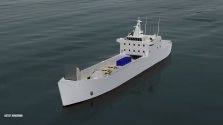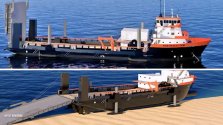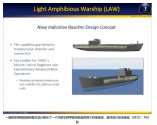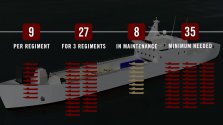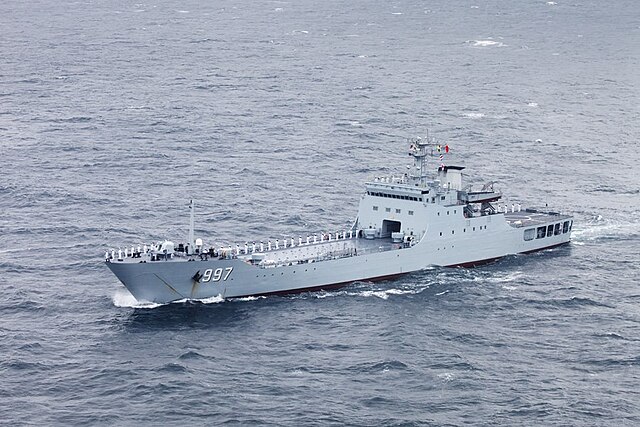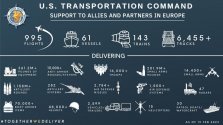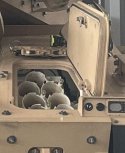Why when you can just send in GJ-11s and bomb the marine force on an island once they are discovered?
The correct response is a picture of a PLA military intelligence officer with a caption that says "oh, so my job is a joke to you?".
I said that people don't understand operations and logistics but I should have added that they also have absolutely no idea about how military intelligence works. It's like that joke: There are two types of people in the world: those who can extrapolate from data.
Let my try to explain the nature of the problem. I don't know what you know or can do so I'll try juggling as an analogy, as if it is not clear to you already, you can easily watch some videos to try and understand the problems involved with that.
Can you juggle one ball? That's easy. Even I can do that. Two balls? You'll get there with some practice. How about three? Three balls is where "juggling" is recognized as a distinct skill. But you can learn it. How about four? Or five? With enough practice you'll get there.
How about: juggling a randomly changing number of balls?
You juggle three and suddenly while the balls are in the air they become six balls, then four, then twelve, then one... How do you think that would work for you?
How about: juggling a randomly changing number of balls while blindfolded and having to rely on another person telling you how many balls are in the air at any given moment?
Are you still there with me? Good. That's called "fog of war". Welcome to military intelligence and let me tell you how things get even harder from here.
The saying "military intelligence is an oxymoron" was coined by a moron. <ba dum tss>
------------
Information domain is the worst domain because information warfare is a scale-free problem. It's dealing with infinities. There's never a point where you reach the end of it and you can have all the information for analysis. And in war you are also limited by time available for analysis and synthesis. You need both because analysis provides the picture of the situation but synthesis develops the optimal response. Synthesis is more difficult than analysis because it has to deal with potential responses from the opponent. Do they know that we know that they know that we know? It's like chess and predicting moves. So you can only hope to be better than your opponent and be good enough to achieve your objective which is outside of information domain and thus scale-specific - the number of enemy personnel, the ability for maneuver etc etc.
When people look at FD30 (correction: it's Force Design 2030, not Battle Force - that was USN fleet plan) they think in terms what a reformed Marine unit can do. What they should be thinking about is what can the enemy know about the reformed Marine unit's capabilities at any given time.
The best analogy here is modern fencing. Extremely complex technically and very bland to an ordinary observer and so quick that even the fighters don't know if they won or not. Not helpful, so I will use kick-boxing.
It doesn't matter that the enemy can knock you out with a straight right followed by a left hook if you know how and when the two punches will be used. You can evade the hits by dodging, you can evade them through footwork putting you out of range, you can evade them by exhausting your opponent's energy. Alternatively you can adopt a defensive posture and just endure the hit and perhaps force the opponent to change strategy thinking that it's not effective.
So when people talk about USMC reform they're really saying "Marines used to do right-left KO and now they're supposed to do flying kicks? Flying kicks only work in movies." But that's not the point. A right-left combo only works from a specific position while a flying kick can come at any angle and distance and the battlefield is not a well-lit arena but a dark street. And there are no judges, no points, no rules.
------------
I made this table when FD30 was announced - look at the structure change and think not in terms of type of attack but in terms of being able to predict your opponent's move. Force Design 2030 is not about being more lethal. It is about surviving and being able to deliver blows against an opponent who has an advantage in the theater.
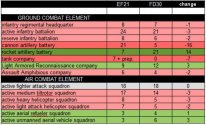
Tanks are direct combat weapons, require extensive support and are not strategically mobile.
Cannons (M777) are mobile but have limited range and firepower and require logistics for operation. You can place a missile launcher at a greater range which expands the search area geometrically. Circle with radius 1 has area of 3,14. Circle with radius 4 has area of 12,56. Missile launchers can shoot and scoot, M777 have to deliver at least three rounds for the same effect. Missiles can have complex trajectory. Artillery rounds have simple ballistic trajectory. Etc.
Helicopter squadrons are both cut and reduced in size to 10 aircraft because helicopters limited range and payload so they're vulnerable to detection.
Fighter squadrons are only cut in size to better adjust to new mode of dispersed operations and to build a reserve pool of aircraft.
All of that also means that there are fewer people in every tactical unit meaning fewer people are necessary for every mission. Fewer people means less resources expended across all actions - combat, maneuver, transport, sustainment etc. And that means lower logistical footprint. Tracking enemy logistics is one of the most basic ways to detect enemy combat units and assess their disposition, strength, preparation etc.
Force Design 2030 is an admission that PLA has the upper hand in WestPac precisely because it's primary focus is on avoiding detection on strategic, operational and even tactical levels.
This is ROGUE Fires concept:
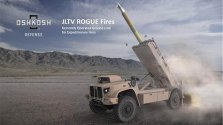
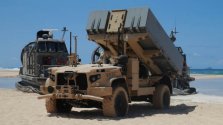
It's almost disposable. Mass approx half of JLTV (~4-6t) because armor is not necessary. Can launch NSM, GMLRS, other munitions, drones.
And that's not even touching on the problem of effectiveness of airstrikes against a prepared ground force. Air power doesn't win wars. That's American propaganda. You can look up my thread on Desert Storm for numbers. Ironically DS is used as best evidence for air power when it is best evidence against it.
GJ-11 is unlikely to do sufficient damage to a prepared Marine unit that it can't continue its mission. The best way to use such asset is to target logistics which is why FD30 does it's best to reduce exposure. If FD30 is applied properly sending GJ-11 on strike missions against individual Marine teams will be a waste of resources. As part of a combined operation against ships transporting Marines - yes. The way you suggest it can be done - no.
Don't apply the logic of neo-colonial warfare to full-spectrum peer warfare. US Marines will never be ISIS no matter how outgunned they may be in WestPac.


